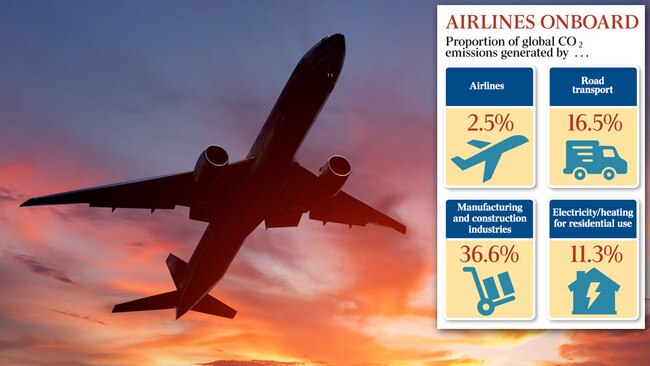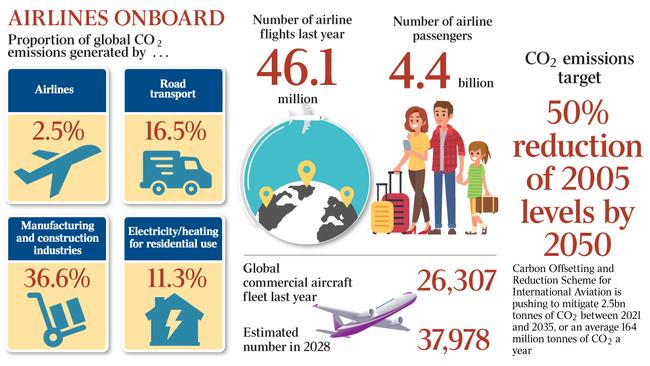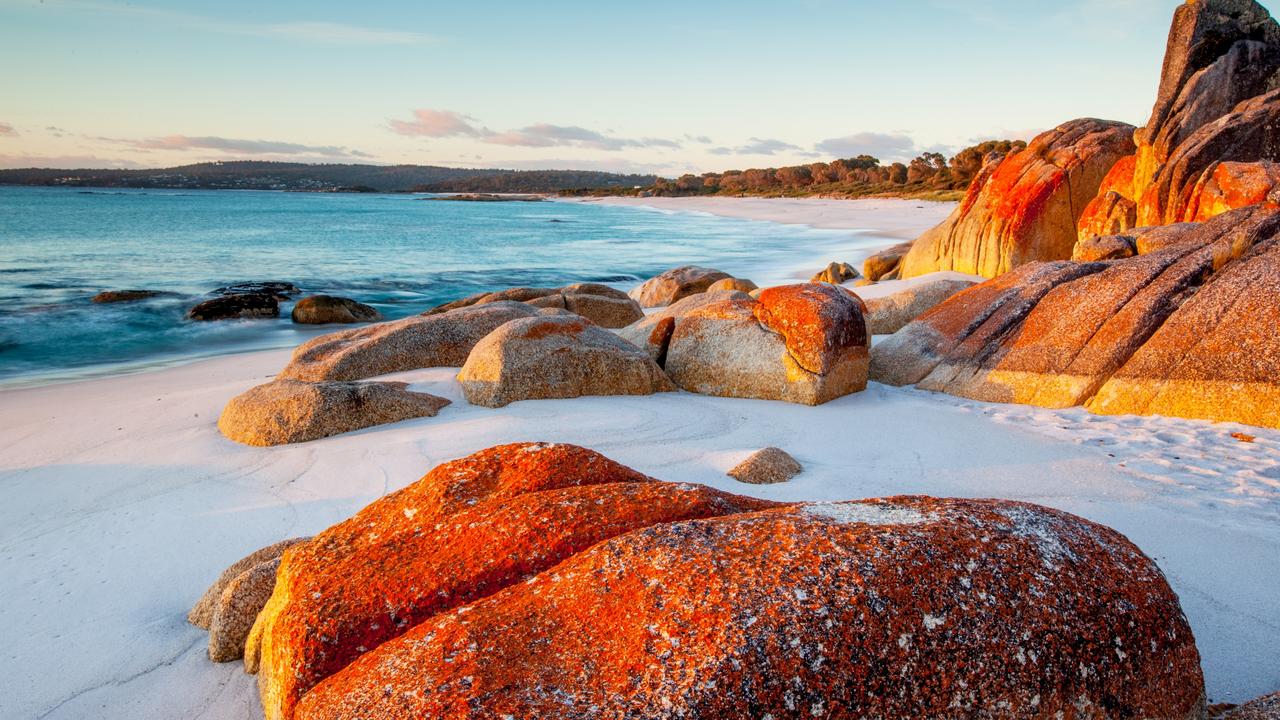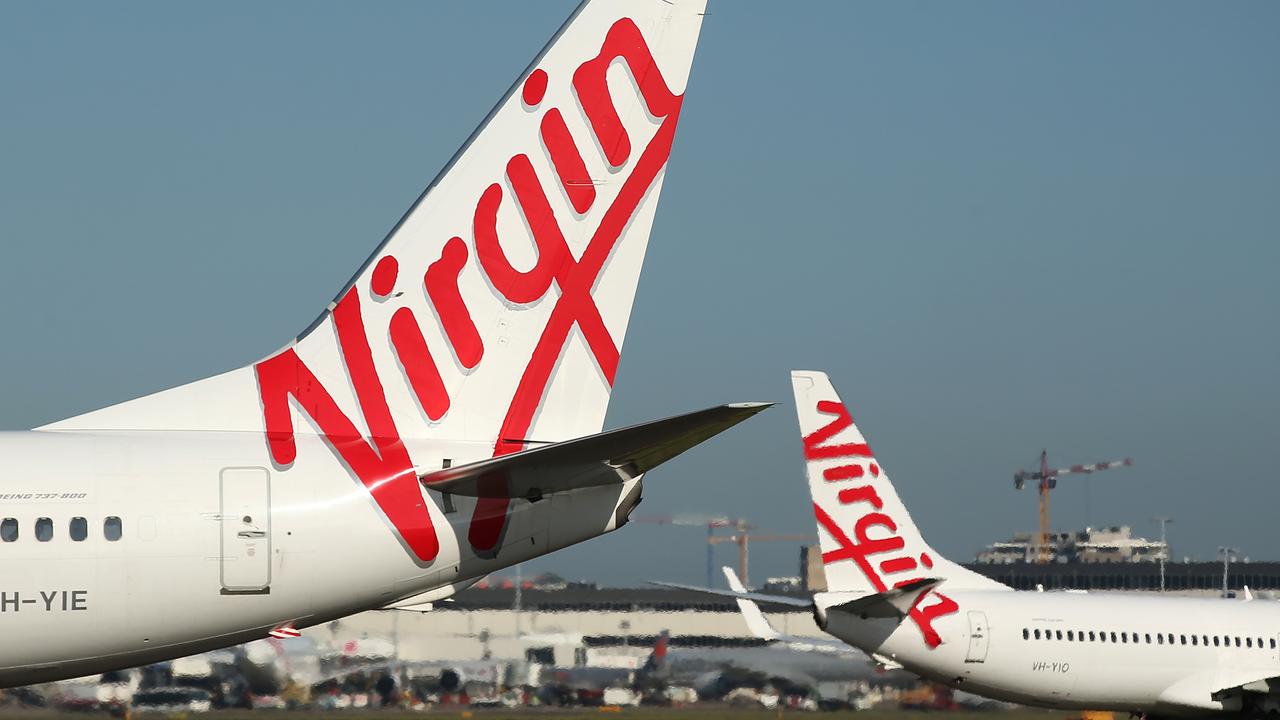Greens on flight of fancy
As environmental activists lobby for flight-free travel, the airlines have started taking note.

When it comes to the environment, airlines face an almost insurmountable task.
On the one hand there’s growing demand for air travel and capacity is expected to double in the next 20 years. With aircraft shrinking in size, given the demise of the thirsty B747 and A380, it’s reasonable to think this demand will be met only with millions more flights, all trying to access increasingly congested airports.
On the other hand, there are rising calls for airlines to reduce carbon emissions, cut waste and be more responsible global citizens. Groups in northern Europe, where fast train travel is a legitimate alternative to flying, have even begun “flight shaming” those who buy airline tickets — calling them out as environmental vandals on social media, in street protests and at airports.
Going “flight free” for a year also is being encouraged by young environmental activists concerned about the emissions produced by every airline flight.

Although such protests are in their infancy, airlines are starting to see the effects with a notable decrease in domestic air travel recorded in Sweden and more recently Germany.
It has all become politically sensitive, with the French and Dutch governments adopting or proposing ecotaxes on airlines to reinforce the message of “polluter pays”. Charges of up to $30 a passenger on each flight are considered a serious deterrent to flying — for airlines and travellers — and the EU is under pressure to introduce a blanket tax across Europe.
As Qantas chief executive Alan Joyce warned last week, there is a real danger of “throwing the baby out with the bathwater” in terms of making air travel unaffordable and unattractive.
It does not seem to matter that airline emissions represent a mere 2.5 per cent of all global carbon dioxide emissions and the airline industry is one of the most committed to reducing its footprint.
Industry split
In June, International Air Transport Association managing director Alexandre de Juniac told airline members in Seoul what mattered was perception and addressing such concerns head-on.
“Unchallenged, this sentiment will grow and spread,” he said. “Along with reducing emissions, we must collectively engage and tell our story more effectively.”
Already there are signs the issue is causing division and tension within the industry.
In an extraordinary attack on low-cost carriers, newly appointed IATA chairman and Lufthansa chief executive Carsten Spohr says airlines that charge people as little as €10 ($17) to fly are doing the environment no favours.
“We shouldn’t be taking advantage of the environment for that little money,” Spohr says.
He goes on to add that such behaviour makes it only easier for environmental activists to muster support for anti-airline protests.
“We’re just seeing the beginning of it,” Spohr says of the flight-shaming movement spearheaded by 16-year-old Swedish schoolgirl Greta Thunberg, who refuses to travel by air.
Years of progress
So what is the answer? Can there be more flights and a reduction in emissions at the same time to meet the airline industry’s own targets?
Despite the views of its chairman, the IATA insists the airline industry is making steady progress towards achieving a targeted halving of 2005 emission levels by 2050.
Various measures put into place during the past decade have already made a considerable difference, with every flight taken today producing 50 per cent less carbon dioxide than it did in 1990.
The improvement is predominantly due to more fuel-efficient aircraft. The Boeing 787-9 is 20 per cent more fuel efficient than the 767 and Airbus’s A320neo 15 per cent more fuel efficient than the original A320.
In the case of the A350-900, the aircraft uses a mere 2.9 litres per passenger for every 100km flown, making it very attractive to image and budget-conscious airlines.
Then there are operational measures such as single-engine taxiing, idle reverse thrust and more efficient air traffic control procedures; and navigational improvements that make better use of airspace and wind streams to minimise flight times.
But airlines know more needs to be done if the aviation industry is going to be able to halve emissions at the same time as the number of flights are multiplying.
IATA environment director Michael Gill says technology is the key and work is under way to produce a revolutionary aircraft design that will be propelled by hydrogen, electricity or sustainable aviation fuel.
“So far all commercial aircraft have a tube-and-wing configuration and are powered with liquid hydrocarbon fuel,” Gill says.
“New aircraft designs with blended wing bodies and hybrid forms of propulsion could be ready for entry into service from about 2035 and allow significant steps in carbon emissions reduction.”
In addition, sustainable fuels are starting to trickle into the pipeline. Since 2016 airports in Norway and Sweden have been offering blends of sustainable jet fuel in standard airport fuel supply, and Dutch-based airline KLM recently announced it would take 75,000 tonnes of sustainable fuel a year from SkyNRG.
Joyce says Qantas is talking to farmers about growing mustard seed as a rotational crop in Australia following a successful flight from Melbourne to Los Angeles fuelled entirely by the product.
But as far as the industry has come, IATA is adamant airlines cannot do it alone.
Outgoing chairman Akbar Al Baker, the outspoken chief executive of Qatar Airways, wants governments to reinvest at least some of the taxes they collect from aviation into developing sustainable fuels.
He is also critical of airspace administration and regulation that he says keep aircraft in the air for longer than necessary, increasing pollution.
“We are still operating the airspace as if we were, quite frankly, three decades behind,” Al Baker says.
“There are times when you should be able to go from point A to point B in an hour but due to constraints at airports by regulators and, at times, national security requirements, that one hour becomes an hour and a half.
“These are issues that need to be addressed in order for us to achieve the carbon emission targets we have imposed on ourselves.”
Green advantage
As the debate rages behind the scenes, commercially savvy airlines are getting on with the job of greening up their image with “plastics-free”, “waste-free” and “eco-friendly” flights.
Although Gill insists the environmental challenge is one airlines are embracing as an industry, it’s pretty clear some have sensed the competitive advantage of going green.
Following on from Qantas’s world-first waste-free flight in April, United Airlines went one better recently with what it billed the “most eco-friendly commercial flight of its kind in the history of aviation”.
As well as generating zero cabin waste, the Boeing 737-900ER flight from Chicago to Los Angeles was entirely carbon offset and powered by sustainable aviation biofuel.
Such “stunts” are applauded by IATA as providing inspiration for other airlines.
But assistant director of corporate communications Chris Goater says they wouldn’t want to encourage carriers to try to outdo each other “in terms of marketing themselves as more or less sustainable than the next”.
“It’s an issue we’re all facing, and a bit similar to safety, we see the environment issues as a non-competitive issue for airlines,” Goater says.
Qantas says its drive to go greener is the result of customers asking crews if more can be done to reduce single plastic use items.
Similar conversations apparently are being had on airlines worldwide in response to awareness of the considerable waste generated by a single flight.
A pilot study at London’s Heathrow Airport found a typical passenger generates 1.43kg of cabin waste, of which 23 per cent is untouched food and drink.
It doesn’t sound like a lot but, with close to four billion people flying each year, it amounts to 6.1 million tonnes of cabin waste, including 20 per cent to 30 per cent untouched food and drink.
In many countries, airlines don’t even have the option of recycling that waste or transferring food to another flight, with regulations requiring incineration of every scrap of “rubbish”.
Qantas is all too aware of the limitations of those regulations as the airline embarks on an ambitious goal of eliminating 100 million plastic items from flights by 2021, and going 75 per cent waste-free by 2022.
Andrew Parker, group executive for government, industry and sustainability, says finding suppliers is relatively easy compared with the challenge of waste-management controls that can differ even from state to state.
Parker says they are trying to work on a way around that, but it is likely to be a slow process.
“(Waste management company) Suez has got this cement kiln product where, instead of using fossil fuels, they’re using waste to create energy,” he says.
“So we’re going to talk to the government about the sort of stuff we would normally put in an oven to burn, such as foodstuffs on a flight from Los Angeles, and if we can have an alternative way to treat that waste and do it in a more environmentally responsible way.”
Passengers as pilots
There is also a role for passengers to play, and a growing number do, opting to “offset” their flight at a small extra cost. The funds generally go to an environmental improvement program involving tree planting or renewable energy.
As one of the earliest adopters of carbon offsetting, Qantas sees an average of 15 per cent of passengers ticking that box when they book flights. For corporate customers the percentage is as high as 22 per cent, and in certain areas, such as Ballina and Byron Bay in northern NSW, 25 per cent of travellers are choosing to pay extra to offset.
The proportions are much lower for other airlines, a mere 0.5 per cent in some cases, but IATA’s position is that it is an important option for concerned passengers.
In de Juniac’s mind at least there is no scope for failure if airlines hope to remain profitable but he bristles at the suggestion his 290 members are “polluters”.
“In terms of the environment, aviation is doing the job. We have for 10 years now slowed down, capped and reduced emissions,” he says.
“We have successfully convinced 193 governments to adopt a worldwide carbon offsetting program and in 2050 our emissions will be half of those in 2005. Stop calling us polluters.”



